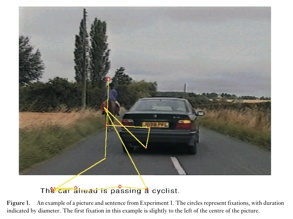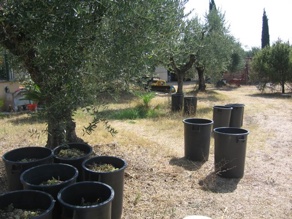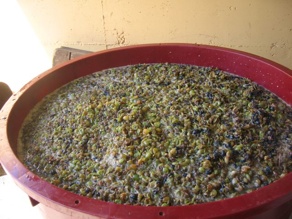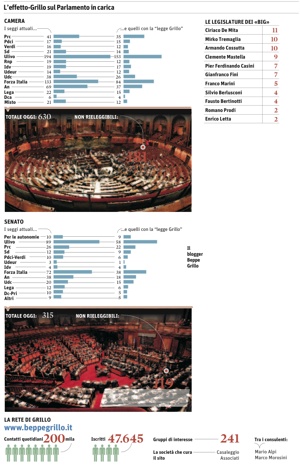Antonio Scarponi sent me this nice picture as a form of graphical protest against a poster published by the Swiss UDC party that was judged racist by the public opinion. I like this form of non-violent protest. Thanks Antonio!
Uncategorized
Silk Maps
I got interested in this topic while I was discussing with a friend. He said that in rural India geographical maps are printed on silk as it makes them more resistant. Another advantage of the cloth over paper is that it makes easier folding back the map once used. So I googled around and I found that silk maps were intensively used during WWII [2], they were called Escape Maps:
During WWII hundreds of thousands of maps were produced by the British on thin cloth and tissue paper. The idea was that a serviceman captured or shot down behind enemy lines should have a map to help him find his way to safety if he escaped or, better still, evade capture in the first place. A map like this could be concealed in a small place (a cigarette packet or the hollow heel of a flying boot), did not rustle suspiciously if the captive was searched and, in the case of maps on cloth or mulberry leaf paper, could survive wear and tear and even immersion in water. The scheme was soon extended to cover those who had already been captured, although a certain amount of ingenuity was required to get the maps into the POW camps.
I found this american company that sells some reproduction, and this one which sells silk scarfs with european maps for tourists.
Disambiguating complex visual information: Towards communication of personal views of a scene
Pomplun, M., Ritter, H., and Velichkovsky, B. Disambiguating complex visual information: Towards communication of personal views of a scene. Perception, 25 (1996), 931–948. [pdf]
——–
This paper reports two experiments on perception and eye-movement scanning of a set of 6 overtly ambiguous pictures. In the first experiment it was shown that specific perceptual interpretations of an ambiguous picture usually correlate with parameters of the gaze-position distributions. In the second experiment these distributions were used for an image-processing of initial pictures in such a way that in regions which attracted less fixations the brightness of all elements was lowered. The pre-processed pictures were then shown to a group of 150 naive subjects for an identification. The results of this experiment demonstrated that in 4 out of 6 pictures it was possible to influence perception of other persons in the predicted way.
Manual and gaze input cascaded (magic) pointing
Zhai, S., Morimoto, C., and Ihde, S. Manual and gaze input cascaded (magic) pointing. In CHI ’99: Proceedings of the SIGCHI conference on Human factors in computing systems (New York, NY, USA, 1999), ACM Press, pp. 246–253. [pdf]
———–
This paper presents an experimental setup where 3 different input mechanisms were compared: pure manual, pure gaze, and a mixed approach. The authors’ first claim is that pure gaze interaction mechanism is unatural as it overload a perceptual channel.
The authors tested the different input mechanisms with 36 subjects. Subjects using gaze only pointing performed worst than those using pure manual pointing mechanism. Best performance were achieved with the mixed approach.
This work explores a new direction in utilizing eye gaze for computer input. Gaze tracking has long been considered as an alternative or potentially superior pointing method for computer input. We believe that many fundamental limitations exist with traditional gaze pointing. In particular, it is unnatural to overload a perceptual channel such as vision with a motor control task. We therefore propose an alternative approach, dubbed MAGIC (Manual And Gaze Input Cascaded) pointing. With such an approach, pointing appears to the user to be a manual task, used for fine manipulation and selection. However, a large portion of the cursor movement is eliminated by warping the cursor to the eye gaze area, which encompasses the target. Two specific MAGIC pointing techniques, one conservative and one liberal, were designed, analyzed, and implemented with an eye tracker we developed. They were then tested in a pilot study. This early- stage exploration showed that the MAGIC pointing techniques might offer many advantages, including reduced physical effort and fatigue as compared to traditional manual pointing, greater accuracy and naturalness than traditional gaze pointing, and possibly faster speed than manual pointing. The pros and cons of the two techniques are discussed in light of both performance data and subjective reports.
Inspecting pictures for information to verify a sentence: Eye movements in general encoding and in focused search
Underwood, G., Jebbett, L., and Roberts, K. Inspecting pictures for information to verify a sentence: Eye movements in general encoding and in focused search. The Quarterly Journal of Experimental Psychology 1, 57A (2004), 165–182. [pdf]
—————
This article sheds some light on the following question: when we see combinations of text and graphics, such as photographs and their captions in printed media, how do we compare the information in the two components? The author employed a sentence verification task in which they used the subject to observe a picture with a caption and decide whether the sentence was correcly describing the scene.
They interpreted longer fixations as an indication of more difficult processing. The characteristic inspection pattern or scanpath started with a fixation near to the center of the picture. Within three fixations, typically, their eyes would saccade to the sentence, and they then read the sentence completely before inspecting the picture and made the decision immediately following this second visit to the picture (p.173).
The participants moved their eyes a number of times between the pictures and the sentence, but the decision of the validity of the sentence was taken not while reading the sentence but while viewing the picture. Sentences attracted more fixations than pictures.
The author discussed briefly also the priming effect (Sanocki and Epstein, 1997): the perception of a scene can be facilitated by prior presentation of a priming scene that makes the layout available early.
In the discussion, the authors question the assumption that performance of the sentence verification task requires the construction of a comparable abstract prepositional forms from the sentence and the picture. Larkin and Simon (1987) have argued that although they may contain the same information, the processing operations required to extract the information will not necessarily be equivalent: pictures and diagrams have advantages over textual descriptions. This ease of recognition of relationship from a picture was not reflected in fixation durations. Therefore the author conclude that the richer representations of information in pictures require extensive encoding durations which are comparable to the encoding of information from text.
The universal underlying truth
I have come to believe that the whole world is an enigma, a harmless enigma that is made terrible by our own mad attempt to interpret it as though it had an underlying truth.
Umberto Eco
Vendemmia 2007
Cori, Latina, Italy.
Inadequacies of the Hypothesis Testing Approach
Today I had the pleasure to discuss with my respected colleague Mirweis the issue in the title. Mirweis, who can be defined a picky statistician, highlighted the fact that often the outcome of a significance test is used to describe the “strenght” of an experimental result. However, the p-value is a measure of probability that repeating the measure we would obtain the same results. Comparing two p-values might be misleading. Using confidence intervals is a better solution.
Inadequacies of the Hypothesis Testing Approach. Strictly speaking, the outcome of a significance test is the dichotomous decision whether or not to reject the null hypothesis. This dichotomy is inherently dissatisfying to many scientists who use the null hypothesis as a statement of no effect, and are more interested in knowing how big an effect is than whether it is (precisely) zero. This has led to behavior like putting one, two, or three asterisks next to results in tables, or listing p levels next to results, when, in fact, such numbers, across (or sometimes even within!) studies need not be monotonically related to the best estimates of strength of experimental effects, and hence can be extremely misleading. Some writers (e.g., Guttman, 1977) view asterisk-placing behavior as inconsistent with the foundations of significance testing logic.
Probability levels can deceive about the “strength” of a result, especially when presented without supporting information. For example, if, in an ANOVA table, one effect had a p level of .019, and the other a p level of .048, it might be an error to conclude that the statistical evidence supported the view that the first effect was stronger than the second. A meaningful interpretation would require additional information. To see why, suppose someone reports a p level of .001. This could be representative of a trivial population effect combined with a huge sample size, or a powerful population effect combined with a moderate sample size, or a huge population effect with a small sample. Similarly a p level of .075 could represent a powerful effect operating with a small sample, or a tiny effect with a huge sample. Clearly then, we need to be careful when comparing p levels.
In Accept-Support testing, which occurs frequently in the context of model fitting in factor analysis or “causal modeling,” significance testing logic is basically inappropriate. Rejection of an “almost true” null hypothesis in such situations frequently has been followed by vague statements that the rejection shouldn’t be taken too seriously. Failure to reject a null hypothesis usually results in a demand by a vigilant journal editor for cumbersome power calculations. Such problems can be avoided to some extent by using confidence intervals.

More here (click on “What is “statistical significance” (p-value).” and then to “Power Analysis”).
Copyright notice: the present content was taken from the following URL, the copyrights are reserved by the respective author/s.
A pear
Sometimes I forget the beauty of simple little things, like a pear!
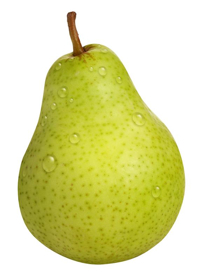
effetti della ‘legge grillo’
Il Sole 24 ore ha pubblicato un articolo che riassume gli effetti di una simulazione nella quale la legge di iniziativa popolare promossa da Beppe Grillo viene applicata all’attuale parlamento. I risultati sono devastanti: a perdere il seggio sarebbero 300 eletti, tra cui i ‘big’ della politica.
Tutti i partiti verrebbero sostanzialmente purificati delle ‘cariatidi’ che affossano la democrazia del nostro paese. Sarebbe una vera liberazione. E’ per questo che l’attuale parlamento non voterà mai una tale legge. Sarebbe puro suicidio politico.
Io ho firmato per l’iniziativa e trovo offensive le parole del dipendente Pier Ferdinando Casini (Udc): «Solo una classe politica senza ideali e priva di serie motivazioni può scodinzolare dietro Beppe Grillo». Caro dipendente Casini, le comunico che io ho più ideali di lei ed ho serie motivazioni che mi portano a ritenere che tutti i politici come lei dovrebbero fare altro invece di legiferare. Mi rendo conto, per contro, del perché lei reagisca così vigorosamente all’iniziativa, essendo la sua poltrona e molte del suo partito a rischio. La verità è che non abbiamo bisogno di lei e di quelli come lei.
W la democrazia diretta!!!



